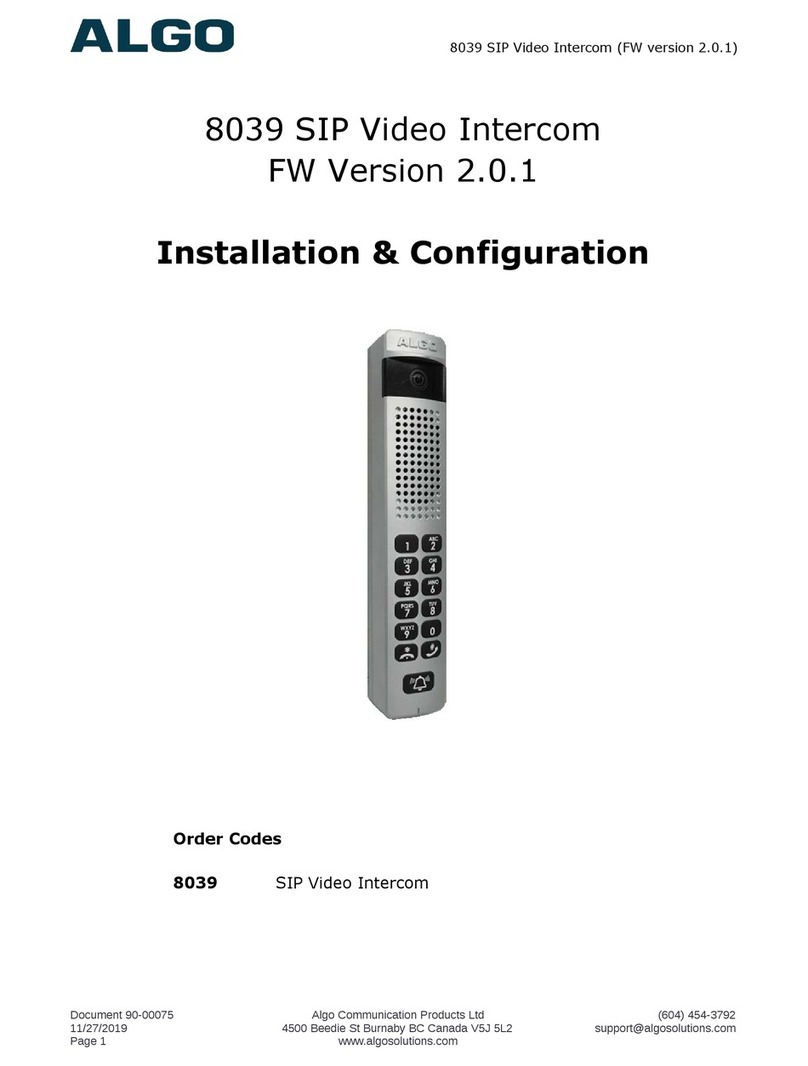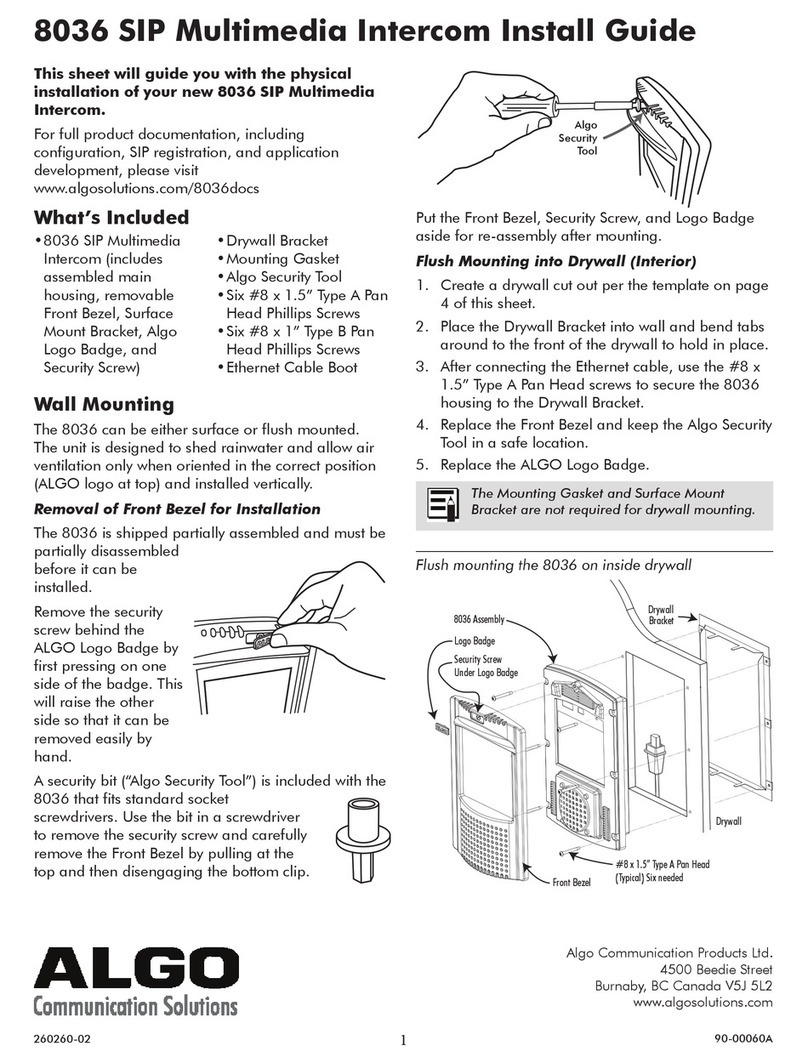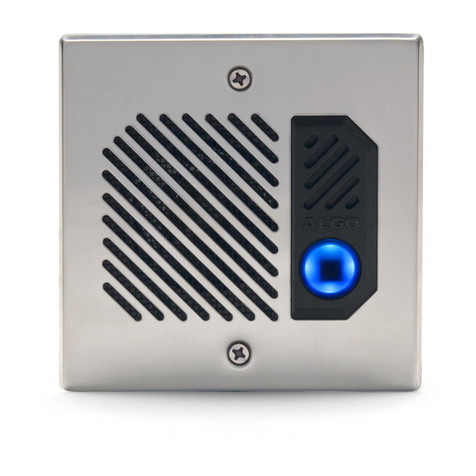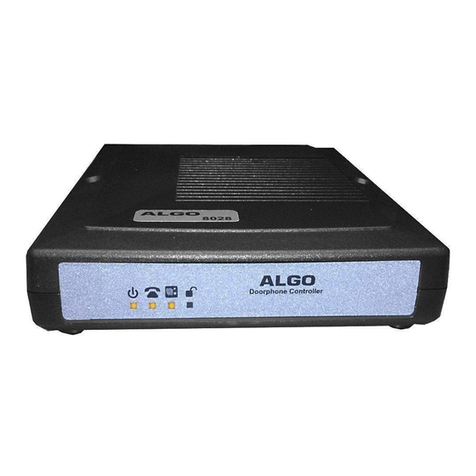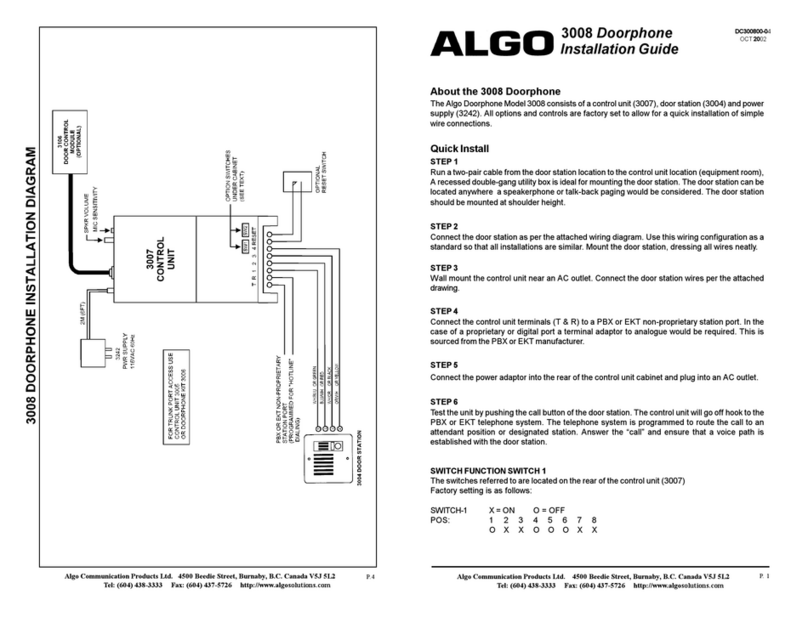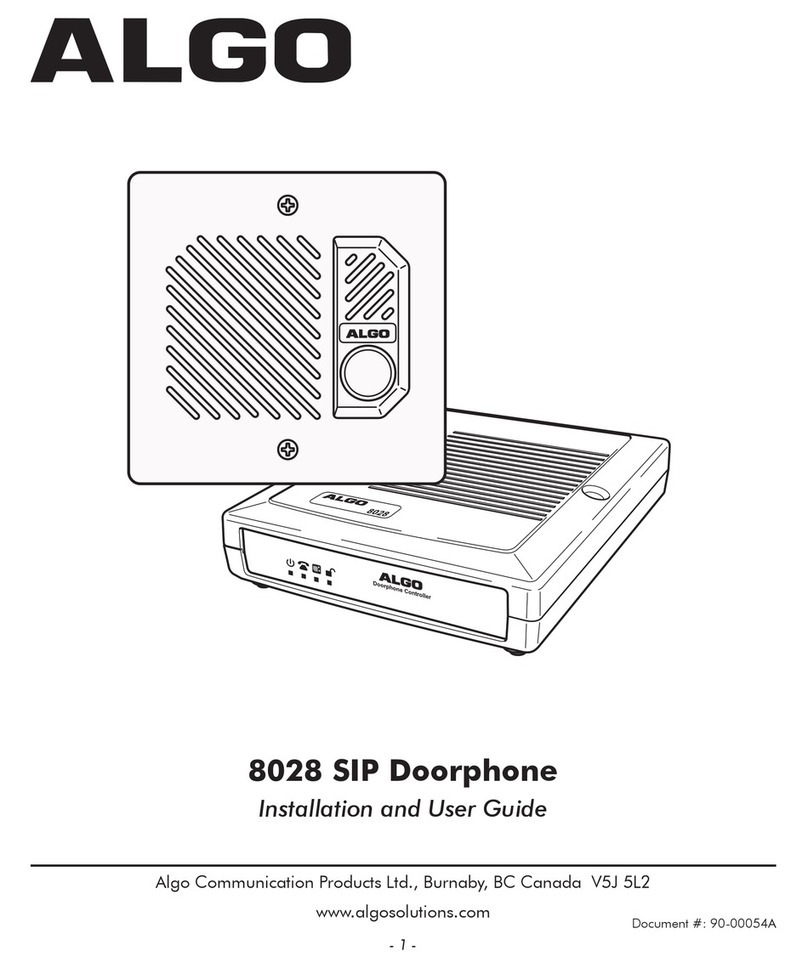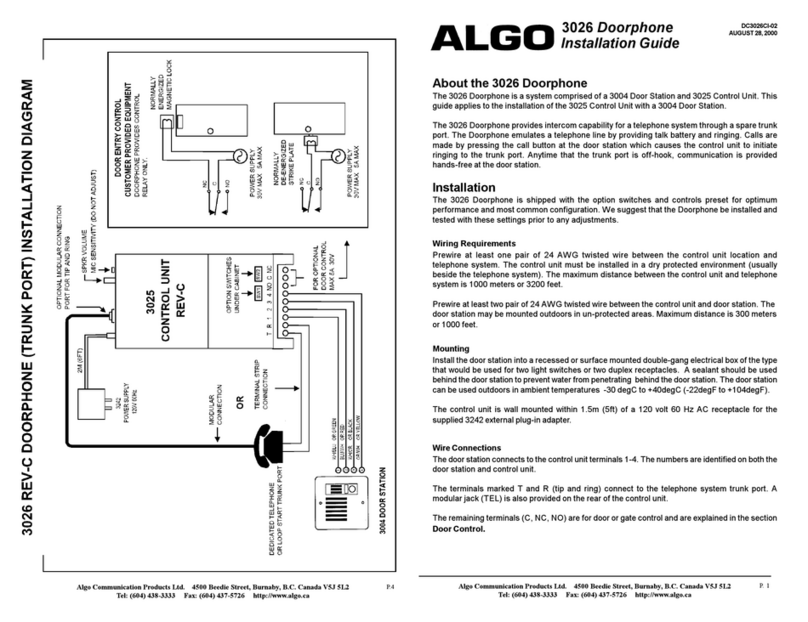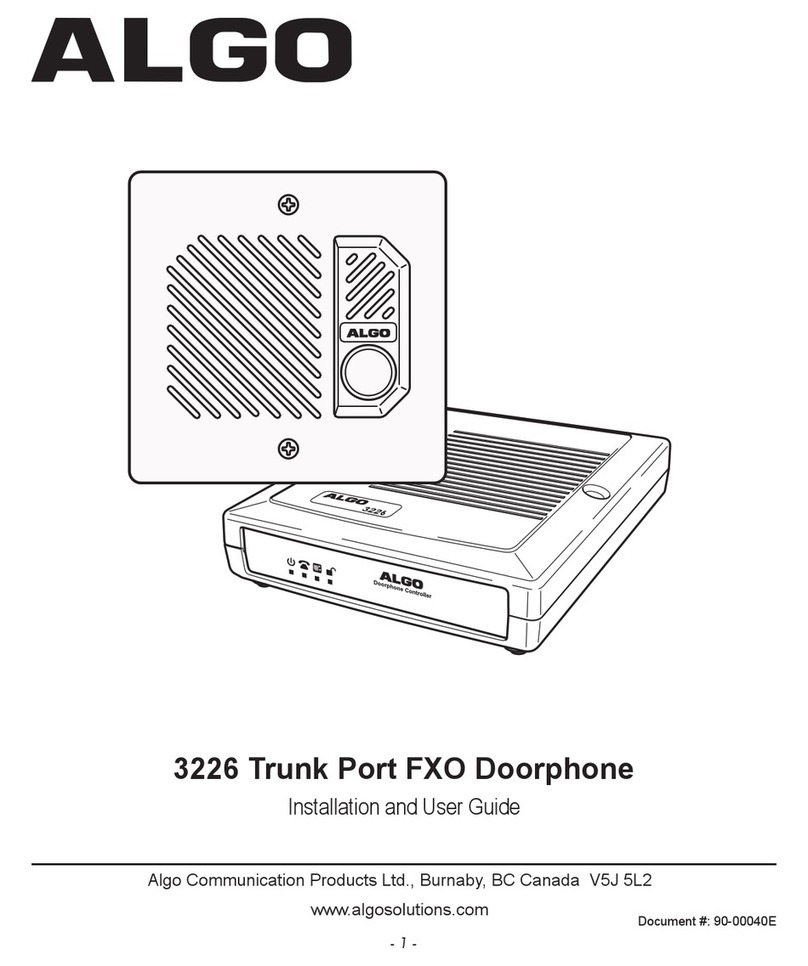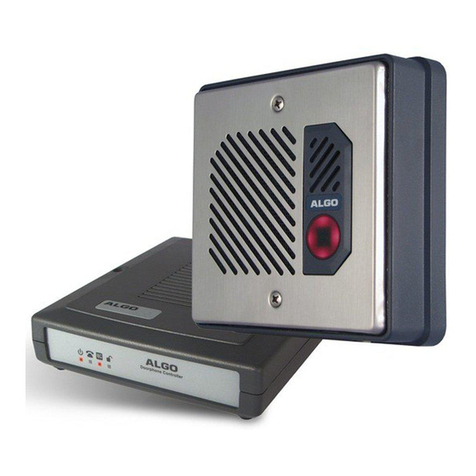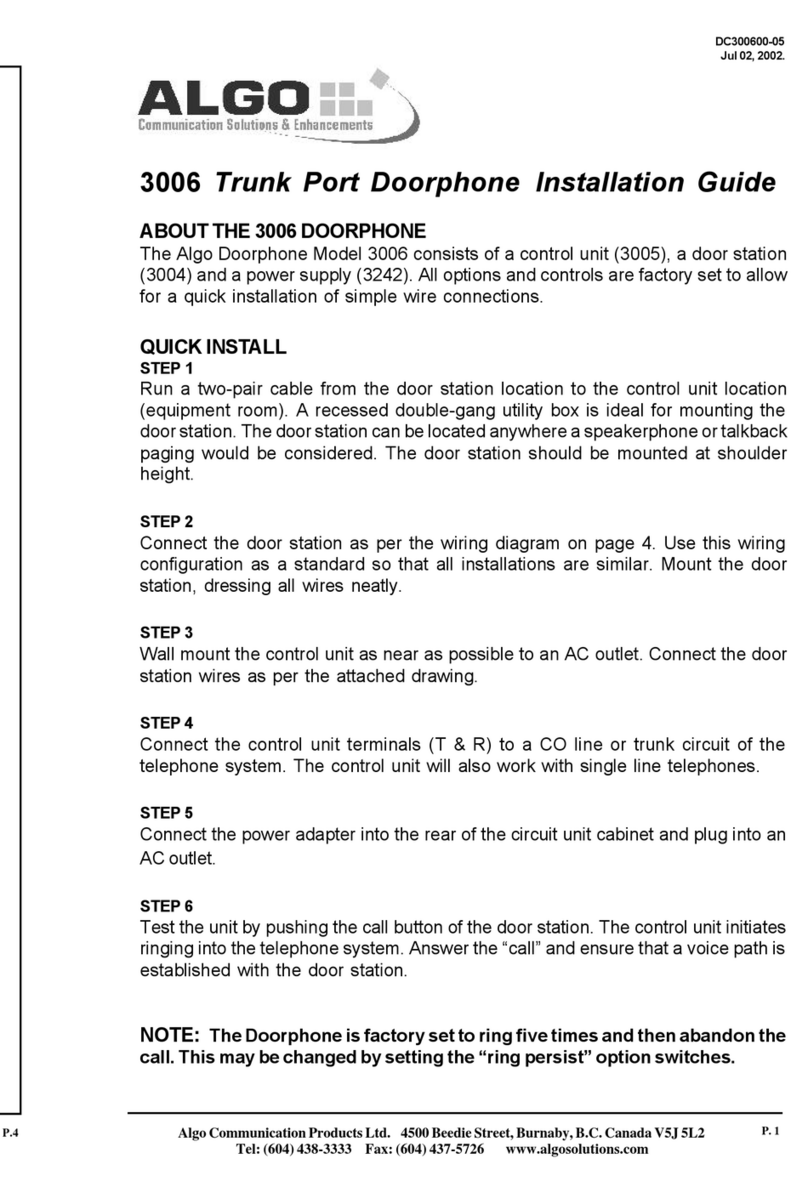- 2 -
Important Safety Notice
The 3228 Station Port FXS Doorphone is designed and tested to comply with EN 60950-1:2006 safety requirements.
When the Doorphone Controller is connected to wiring that exits the building, there is potential risk of lightning
induced electrical surges or high voltages from fault conditions. To reduce risk, outdoor wiring should be protected
by Earth grounded conduit whenever possible. If outdoor wiring will be connected to the Doorphone Controller
then the power supply provided with the Doorphone Controller must first be connected to a properly Earthed mains
supply. Under no circumstances can the Doorphone Controller be disconnected from Earth ground while connected
to outdoor wiring. Customers are required to have adequate lightning protection where the telephone line enters the
building. The 3228 is not intended for connection to the PSTN.
Support
Algo is pleased to offer telephone or email support relating to installation issues, applications assistance, or general
product inquiries.
Algo Communication Products Ltd.
4500 Beedie Street
Burnaby, BC, Canada, V5J 5L2
Algo products are warranted against defect in workmanship for a period of 12 months after installation not to
exceed 18 months from date of manufacture. For warranty or non-warranty repair support please contact your
distributor or reseller. If necessary, contact Algo using the support contacts listed above.
FCC Compliance
This equipment has been tested and found to comply with the limits for a Class B digital device, pursuant to part 15
of the FCC Rules. These limits are designed to provide reasonable protection against interference in a residential
installation. This equipment generates, uses, and can radiate radio frequency energy and, if not installed and
used in accordance with the instructions, may cause harmful interference to radio communications. However, there
is no guarantee that interference will not occur in a particular installation. If this equipment does cause harmful
interference to radio or television reception, which can be determined by turning the equipment off and on, the user
is encouraged to try to correct the interference by one or more of the following measures: 1) Reorient or relocate
the receiving antenna, 2) Increase the separation between the equipment and receiver, 3) Connect the equipment
into an outlet on a circuit different from that to which the receiver is connected, or 4) Consult the dealer or an
experienced radio/TV technician for help.
Disclaimer and Limitation of Liability
While every effort has been made to ensure that the information contained in this Installation and User Guide is
accurate and complete, no liability can be accepted for any errors or omissions. Algo Communication Products Ltd.
(hereinafter “Algo”) reserves the right to change the specifications of the hardware or software/firmware described
herein at any time without prior notice. Algo and its subsidiaries assume no responsibility for any damage or loss
resulting from the use of this Installation and User Guide.
Algo and its subsidiaries assume no responsibility for any loss or claims by third parties which may arise through the
use of this product. Algo makes no warranties, either expressed or implied, regarding the Algo 3228 Doorphone or
related software and firmware, its merchantability, or its fitness for any particular purpose. The exclusion of implied
warranties is not permitted by some states. As such, the exclusion may not apply to you.
The Algo 3228 Doorphone has been tested using a variety of network systems. However, the large number of
possible hardware and network configurations makes testing under every circumstance impossible. Thus, Algo does
not guarantee uninterrupted service or correction of errors or that the functions or performance of the product will
meet your requirements.






